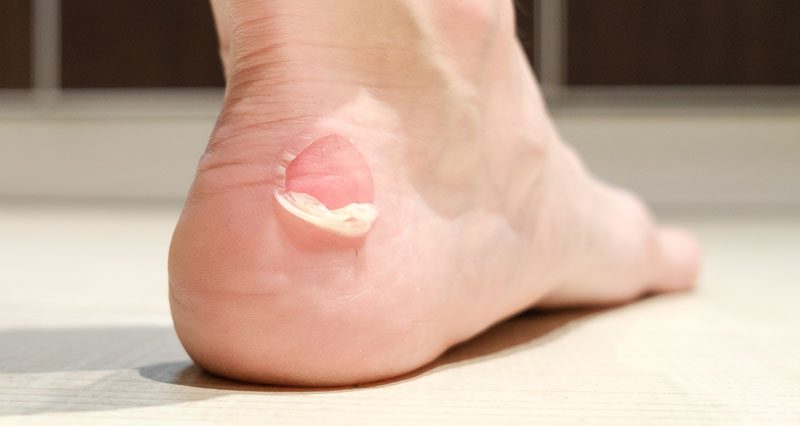Most of us wear socks almost all day. We wear socks with our shoes when we are at home and some even while sleeping. I did a test on what it is like to go without socks for a week and came up with the answer to the question. Is it necessary to wear socks while walking?
Socks are not absolutely necessary for walking. However, it’s important to understand the benefits of wearing socks when walking and the potential risks of going sockless. The advantages are that socks bring more comfort, absorb sweat, and prevent blistering.
In the rest of this article you will find out why wearing socks with shoes is still the best choice. I will also tell you 3 situations in which it is better not to wear socks.
Are socks necessary for walking?
We don’t wear socks just because most people do. Wearing socks has many positive benefits for the comfort and health of your feet when walking. Socks can also serve as a fashion accessory, but very few people use them for this purpose. You can read more about how to pick the right socks here.

Although socks are not mandatory for barefoot walking or for walking with shoes, they do offer some advantages.
Firstly, wearing socks can provide additional cushioning and support to your feet, which can help prevent blisters and other foot injuries. A lot of friction is created when walking, and socks are the only support between the shoes and the foot to cushion the direct friction of the foot against the shoe.
It is important to wear socks that are just the right size and not too big or too small. Socks should also be high enough to cover the back of the foot so that it does not rub against the shoe. It is important to wear socks that are just the right size and not too big or too small. Socks should also be high enough to cover the back of the foot so that it does not rub against the shoe.
| EUROPE | UK | US | |
| S | 37-39 | 4.5-6 | 5-6.5 |
| M | 40-41 | 6.5-7.5 | 7-8 |
| L | 42-44 | 8-9.5 | 8.5-10 |
| XL | 45-46 | 10-11 | 10.5-11.5 |
| XXL | 47-48 | 11.5-12.5 | 12-13.5 |
| XXXL | 49-52 | 13-14.5 | 14-15.5 |
It is, therefore, a good idea to know which size socks you should wear. I suggest you read this short but comprehensive guide on choosing the right sock size. You can find it here.
Socks contribute to foot health
Socks can also help absorb sweat, keeping your feet dry and comfortable. In cold weather, wearing socks can also provide insulation and help keep your feet warm.
Going sockless while walking can increase the risk of foot injuries, especially if you’re wearing shoes that rub against your skin. This can lead to blisters, cuts, and other skin irritations. Going sockless can also increase the likelihood of developing foot odor and fungal infections, as socks help to wick away moisture and prevent the growth of bacteria and fungi.

Not wearing socks in your shoes can lead to serious foot infections. Today, the vast majority of shoes we wear are made of synthetic materials. Which give off chemicals when they come into contact with water (in this case, sweat). The only shoes that can be worn without socks are when we wear shoes made of real leather and when we wear flip-flops and sandals. More on when it is not appropriate to wear socks below.
Ultimately, whether or not you choose to wear socks when walking depends on personal preference and the circumstances. If you’re taking a leisurely walk in comfortable shoes, going sockless might be fine. However, if you plan on walking long distances, wearing socks can help prevent foot injuries and keep your feet comfortable and healthy.
When should you not wear socks?
There are also some cases where it is preferable not to wear socks.
- When wearing open-toed shoes or sandals: Socks generally should not be worn with open-toed shoes or sandals as they can look awkward and ruin the aesthetic appeal of the footwear.
- When it’s very hot outside: In extreme heat, wearing socks can make your feet feel hot and sweaty, which can be uncomfortable. In such cases, it may be better to wear sandals or breathable shoes that allow air to circulate around your feet.
- When participating in certain sports: Depending on the sport, wearing socks may not be necessary or practical. For example, wearing socks during yoga or Pilates can make it difficult to maintain proper footing and balance.

Wearing socks creates a dark, warm, and moist environment that is ideal for fungi and bacteria to grow. To avoid this, it is important to change socks every day. If possible, change them during the day, when we feel our feet are wet (when we come in from a long walk or from work).
To prevent fungi and bacteria from forming during prolonged wear. We need to choose good quality materials. Natural materials are the best – cotton, bamboo, and Merino wool. For a more detailed comparison of the best sock materials, click here.
